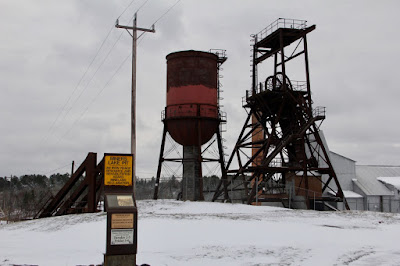Here's a "money quote" from a Timberjay editorial as republished in MinnPost:
As Sen. Bakk noted, the environmental review, which is the initial part of the permitting process, is designed to better understand the risks and attempt to mitigate those risks to the extent that’s financially feasible. That process is not designed to answer the more fundamental questions of whether a proposed project makes sense or poses too great a risk to allow to move forward.If it's been some time since you've read Minnesota's Environmental Policy Act, we suggest you follow the preceding link. The really germane sections are a relatively quick read. In fact, the most relevant section is one that seems to be missing from Minnesota's rules and regulations.
“So, once they start down that road of applying for those permits it’s pretty hard to stop,” said Bakk.
Subd. 2.State responsibilities.
In order to carry out the policy set forth in Laws 1973, chapter 412, it is the continuing responsibility of the state government to use all practicable means, consistent with other essential considerations of state policy, to improve and coordinate state plans, functions, programs and resources to the end that the state may:
...
(3) discourage ecologically unsound aspects of population, economic and technological growth, and develop and implement a policy such that growth occurs only in an environmentally acceptable manner;
...
(6) develop and implement land use and environmental policies, plans, and standards for the state as a whole and for major regions thereof through a coordinated program of planning and land use control;
(7) define, designate, and protect environmentally sensitive areas;None other than a former Commissioner of Minnesota's Department of Natural Resources claims that:
... Minnesota’s regulatory standards are inadequate to protect a unique natural resource such as the Boundary Waters.Perhaps you'll be more successful than I was doing an internet search for Minnesota's definition and designation of environmentally sensitive areas. I could find no such references.
 |
| Twin Metals offices in Ely, MN
Photo by J. Harrington
|
Taken by itself, the preceding represents, in my opinion, an egregious example of governmental failure to implement legislation. What seems to represent an even more significant example of malfeasance is the state's willful(?) ignorance of international mining standards that have evolved over the past decade. The Initiative for Responsible Mining Assurance [IRMA] has standards that state, among other requirements:
4.6.5.3. IRMA will not certify new mines that are developed in or that adversely affect the following protected areas:
•World Heritage Sites, and areas on a State Party’s official Tentative List for World Heritage Site Inscription;
•IUCN protected area management categoriesI-III;
•Core areas of UNESCO biosphere reserves.
 |
| a "reclaimed" iron mine site near Ely, MN
Photo by J. Harrington
|
A preliminary reading indicates that the Boundary Waters Canoe Area could well qualify as one of the IUCN protected area categories, if Minnesota were working with the IUCN World Commission on Protected Areas. Would such efforts solve the mining issues near the Boundary Waters or those potentially affecting Lake Superior? Not by themselves, but they would help Minnesota frame the issues of whether, and under what conditions, activities that can significantly affect environmentally sensitive areas could or should be allowed to apply for operating permits.
The Well Rising
The well rising without sound,the spring on a hillside,the plowshare brimming through deep groundeverywhere in the field—The sharp swallows in their swerveflaring and hesitatinghunting for the final curvecoming closer and closer—The swallow heart from wingbeat to wingbeatcounseling decision, decision:thunderous examples. I place my feetwith care in such a world.
********************************************
Thanks for visiting. Come again when you can.
Please be kind to each other while you can.
No comments:
Post a Comment